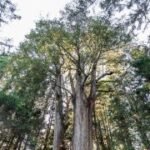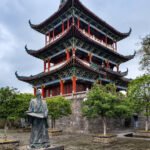Visiting Smangus primarily aims to explore Taiwan’s third-largest ‘Sacred Tree’, known as the camphor tree, standing approximately 35 meters tall with a circumference of around 20.5 meters. Resembling a candlestick, it takes about 20 people to encircle the tree, which is estimated to be 2500 years old. To protect the tree’s roots, a wooden platform has been constructed around them. Along the Smangus trail, one can witness ancient giant trees, maple, cherry blossoms, bamboo forests, cypresses, and camphor forests. The geological features of streams and gravelly slopes are also visible, making it a precious forest resource in Taiwan. Smangus is a popular destination for adventure-loving tourists. The early inhabitants of the Smangus tribe, the Thao people, moved north from Ren’ai Township in Nantou County and settled on the east bank of the Takikin River in the Hsinchu mountain area. The Mrqwang sub-tribe is one of them, and Smangus is named in honor of a pioneering ancestor, Mangus (Smangus in Thao language). The tribe had electricity supply starting from 1979 AD and began developing tourism around the sacred tree groves from 1991. The tribe still retains many traditional Thao lifestyles, with local agricultural products such as millet and peaches, and has also developed homestays, hotels, and restaurants to cater to tourists visiting Smangus. The opening hours and business status are subject to the actual conditions on the day.







